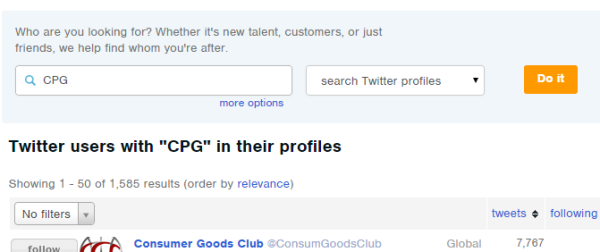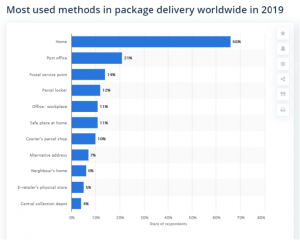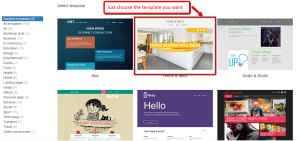Columnist Paul Shapiro explores the myriad of ways social networks can be utilized in your link-building efforts.

I recently asked a room of experienced marketers how they thought social media marketing could assist their SEO efforts. The answers were more or less what I had expected to hear:
- Social media helps foster relationships, which in turn helps build links and improves rankings.
- Social media aids in public relations, as a distribution channel and a means of generating easy online buzz.
- Social sharing provides a form of social proof, giving greater credibility and trustworthiness to your content.
- Brands can rank for their social networking profiles and receive greater visibility within the SERP.
While these are all true, let’s focus on how link building on social platforms can help unite a brand’s social media marketing and SEO efforts.
At the most basic level, social networking sites provide an easy way to share and distribute your message. If the content is seen by the right people, it can lead to new backlinks.
In fact, there are measurable correlations between social shares and backlinks that demonstrate that social media can help with backlink acquisition. Let’s explore this integration across social platforms.
Link Building with Google+
Google+ has an excellent infrastructure for finding link opportunities and organizing those linking prospects for outreach; it even includes an integrated messaging system for actually getting in touch with these people.
Prospecting
There are lots of ways to find linking opportunities on Google+. For example, using Google search, you can find a journalist by publication with an advanced search operator such as site:plus.google.com inurl:about “contributor to” mashable.com
Alternatively, you can use the “find people” section on Google+ and search with the “find coworkers” function. In the “company name” field, insert the name of a publication.

Organizing Link Building
You can use Google+ Circles to organize and segment outreach lists.
I typically have a Circle for journalists by publication, a Circle for prospects who wrote about similar subject matter, and a Circle for bloggers with whom I have had past successes building links.
After you have gotten a link from someone, you can move these individuals into a “Success” Circle.

Reaching Out Within Google+
One of the great advantages of doing link building with Google+ is its versatile built-in outreach engine.
Once you have an outreach Circle, you can choose to share an update specifically with the individuals contained in that Circle.
If people in the Circle have circled you back, then you can also opt to send them an email notification with that update. Check the “Also send email from you to [Circle Name]” box, and they will receive the update in their inbox.

You can also send a message to individuals or even initiate a Hangout with them (message or video). This is a great substitute for emailing.

Link Building with Twitter
Twitter is my social network of choice, and it also is a powerful channel for your link-building efforts.
Tools like klear (formally Twtrland) or Followerwonk can be leveraged to easily find subject matter influencers and their associated websites.

Once you know your prospects, you can organize them using Twitter Lists. You can easily import them using a tool like Electoral. Segment your lists and interact with the people periodically, building relationships with them over time.
If you are looking for a Twitter user’s email address, you can use a tool like All My Tweets to load everything they’ve ever tweeted on one page — then use Control +F in your browser to look for patterns that resemble email addresses like “at domain dot com.”
If you cannot find someone’s email address, Twitter Direct Messages are a decent substitute and can provide a more private option, as compared to just mentioning people with linking inquiries. Of course, they have to be following you before you’re able to send them a direct message.
You should also be doing some basic social listening on Twitter (and other social networks) using a tool like Social Searcher.
Keep a lookout for people who mention topics related to your website’s niche that you might be able to ask for a link. The old “I see you mentioned [topic], so you might like [link]” works quite well.
Link Building with YouTube
People love to link to video content, but, unfortunately, most companies depend on YouTube for their entire online video strategy.
The result of this mindset is that YouTube.com earns all the backlinks for your video content rather than your company’s website. Your company can mitigate this by self-hosting videos or using a service like Wistia, which allows you to control embedding so that people link to your website instead of to YouTube.
If self-hosting videos is not an option, and your company insists on an all-YouTube-or-nothing approach, you can still use that video content to build links through a standard link reclamation process:
Take a video that has been successful on YouTube, put the YouTube.com URL into a backlink checker like Majestic, Ahrefs, or Moz’s Open Site Explorer and get a list of websites linking to it.
You can reach out to these websites and ask them to link to your company website instead of the YouTube.com link.
Another approach is to access your company’s YouTube Analytics. “Traffic Sources” will show you any websites that embedded the video (but not necessarily linked to it). You can reach out to those websites and request a link to your company website.

Link Building with Social Paid Search
Half the battle of link building is getting in front of the right eyes, and paid social ads can help!
For example, you can use Facebook ads and target people by their workplace. For our purposes, we’d target journalists (who may link to us), and the workplaces would be a list of publications like Wired, The New York Times, and Mashable.
You can use LinkedIn advertising to accomplish this, but those ads tend to be a little more expensive.

Conclusion
As you can see, there are many ways to perform link building using social media. It is one of the many ways to break down marketing silos and integrate your social media marketing and SEO.
Social networking has become one of the primary ways we communicate today, so those platforms become a logical medium for conducting link outreach. In addition, there are tools baked into social network sites to aid link prospecting, easy ways to get in front of influential journalists who may have otherwise ignored you, and even systems to help organize your outreach.
Social media and SEO are two peas in a pod, and building links is a great way to make use of their synergy today.
Some opinions expressed in this article may be those of a guest author and not necessarily Marketing Land. Staff authors are listed here.








